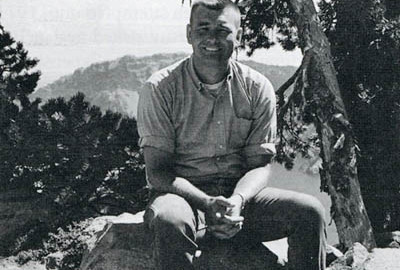It was in that era of cheap tuition.
Yes. One guy had been working on a masters for 12 years, I couldn’t believe it. My wife encouraged me to put a limit on my stay because she was a teacher and didn’t want to support me forever. I had misgivings about working in the Warner Valley because of the possibility that these lakes could dry up and there goes my study. Jack countered with something about studying Crater Lake. We were comparing the lakes of Oregon and I said there are a lot of lakes here that are classified as oligotrophic. I said that classification is based on their level of production and I said Crater Lake is oligotrophic, and so is Waldo (2). At least that’s what they say in the literature; so are Odell Lake and Woahink on the coast (3). My thesis was centered on the question about whether these lakes are the same, even though they were all classified as oligotrophic (4).
Why Woahink?
I wanted to give the thesis some diversity by including a coastal lake. If we would have had more money and time I would have looked at a place like Wallowa Lake (5).
I might have considered another mountain lake.
I had Crater, Odell and Waldo, but I thought I’d get one on the coast. I thought about Wallowa in the Blue Mountains but that was a long trek over there and we didn’t have a lot of money and time. I wanted to focus on these four and in those days, in the field of limnology, there was a lot of emphasis on eutrophication, and oligotrophic lakes, and classification. Those days are gone. People don’t do that anymore.
Because it is considered descriptive work?
It’s descriptive and who cares? In those days there was a lot of concern about lake classification. It was kind of the old school.


